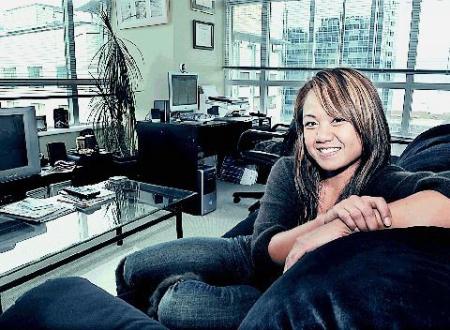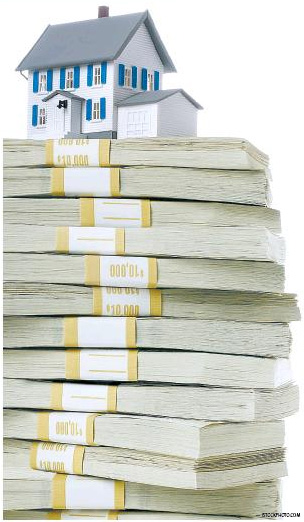Sun
CRITIC’S PICKS
A list of restaurants recommended and anonymously visited by Sun restaurant critic Mia Stainsby. Prices are per couple for three courses, with a glass of wine each, before tip and taxes.
$ means $50 or less
$$ means $50 to $100
$$$ means more than $100
– – –
– WEST COAST
Aurora Bistro The first fine dining room on Main St. Inventive food, hip spot. 2420 Main St., 604-873-9944. $$
Bishop’s A leader in sustainability. Excellent service. 2183 West Fourth Ave., 604-738-2025. $$$
Bin 941 Tapas bar in tiny eclectic space. 941 Davie St., 604-683-1246. $$/$$$
Bin 942 Creative, delectable tapas dishes. 1521 West Broadway, 604-734-9421. $$/$$$
Boneta An ambitious chef behind a constantly changing menu, some dishes reaching the sublime. 1 West Cordova St., 604-684-1844. $$
Brix Large tapas selection, 60 wines by the glass. 1138 Homer St., 604-915-9463. $$/$$$
Chow. Delicate textures marries bold flavours. A successful union. 3121 Granville St., 604-608-2469. $$$
Crave Divine comfort food with elegant touches. 3941 Main St., 604-872-3663. $$
Cru Blurs the lines of fine dining, lounge and bistro. Lovely “small plates” or a four-course prix fixe. 1459 West Broadway, 604-677-4111. $$
Fuel The food sings. A joy! 1944 West Fourth Ave., 604-288-7905. $$$
Gastropod Beautifully controlled flavours, great value for fine food. 1938 West Fourth Ave., 604-730-5579. $$
Goldfish A designer room for designer folk. Good value for the casually elegant food. 1118 Mainland St., 604-689-8318. $$
Nu A sophisticated version of casual dining. Beautiful flavours, great atmosphere. 1661 Granville St., 604-646-4668. $$
Parkside Handsome room in residential West End, richly flavoured food. Great spot. 1906 Haro, 604-683-6912. $$/$$$
Raincity Grill Locovore’s delight. Try their 100-Mile Menu. Some exquisite dishes. 1193 Denman St., 604-685-7337. $$$
Salt Tasting Room Inspired charcuterie style food with wine pairings. Edgey surrounding. 45 Blood Alley, 604-633-1912. $$
Soma A hip, inexpensive little boite off Main St. with a perky menu, great beers. 151 East Eighth Ave., 604-630-7502. $/$$
Suvai Good value neighbourhood spot dedicated to local ingredients. 2279 West 41st Ave., 604-261-4900. $$
West Vies for best restaurant in the city. 2881 Granville St., 604-738-8938. $$$
Yew A stunner of a room; “Urban West Coast” food to suit. Four Seasons Hotel. 791 West Georgia St., 604-692-4939.
– ITALIAN
Amarcord Food from the Bologna and Emilia Romagna area of Italy, elegantly presented. Clear, natural flavours. 1168 Hamilton St., 604-681-6500. $$
CinCin Restaurant and Bar Seasonal menu with wood-fired dishes. Notable desserts. 1154 Robson St., 604-688-7338. $$/$$$
Cioppino’s Mediterranean Grill Fine Italian cuisine with a light touch. 1133 Hamilton St., 604-688-7466. $$$
Don Francesco Ristorante Romantic, classic Italian restaurant with heart. 860 Burrard St., 604-685-7770. $$$
Il Giardino “New Italian” food, light with exotic elements. Big on game. 1382 Hornby St., 604-669-2422. $$$.
Italian Kitchen The spaghetti with truffle cream and Kobe meatballs here is luscious. A modern Italian restaurant. 1037 Alberni St., 604-687-2858. $$
La Buca A neighbourhood restaurant serving quality food, backed up by great service. 4025 McDonald St., 604-730-6988. $$
La Terrazza Knock-out looks, intelligent and friendly staff, traditional Italian food. 1088 Cambie St., 604-899-4449. $$$
– CHINESE
Hon’s Wun-Tun House Slurp noodles and chomp on delicious potstickers. Huge menu. 1339 Robson St., 604-685-0871. $
Imperial Seafood Fine Cantonese food, (expensive) in the lovely Marine Building. 355 Burrard St., 604-688-8191. $$$
Kirin Seafood Exquisite Cantonese food. City Square, 555 West 12th Ave., 604-879-8038. $$$
Legendary Noodle. Handmade noodles, made to order. Funky spot. 1074 Denman St., 604-669-8551. $
Pink Pearl It’s been around forever and is still a going concern. 1132 East Hastings St., 604-253-4316. $
Sun Sui Wah Cantonese cuisine with light, finely tuned flavours. 3888 Main St., 604-872-8822. $$
Wild Rice Modern Chinese food in a sophisticated, hip setting. 117 West Pender St., 604-642-2882. $$
– JAPANESE
Ajisai Sushi Bar Small neighbourhood spot with sushi that sings. 2081West 42nd Ave., 604-266-1428. $
Gyoza King Gyozas reign supreme. Open late. 1508 Robson St., 604-669-8278. $
Hapa Izakaya Young and stylish; great izakaya-style Japanese food. 1479 Robson St., 604-689-4272; 1516 Yew St., 604-738-4272. $/$$
Kingyo Wonderfully crafted interior, interesting izakaya dishes. A slice of Tokyo. 871 Denman St., 604-608-1677. $$
Tojo’s Restaurant The topper in this category. Japanese food at its best. 1133 West Broadway, 604-872-8050. $$$
Yuji’s Expect the unexpected. Food takes some creative turns. 2059 West Fourth Ave., 604-734-4990. $$
Zest Japanese Cuisine Grazing style modern Japanese menu in cool modern room. 2775 West 16th Ave., 604-731-9378. $$
– FRENCH/belgian
Bacchus Restaurant Some classics, some nouveau. Expect the best. Wedgewood Hotel, 845 Hornby St., 604-689-7777. $$$
Chambar Modern Belgian food. Hot hipster scene. Chef has cooked in a three-star Michelin restaurant. 562 Beatty St., 604-879-7119. $$
Jules Paris, anyone? Authentic food, authentic feel. Charming! 216 Abbott St., 604-669-0033. $$
Le Crocodile Refined French with incredible wines to boot. 909 Burrard St., 604-669-4298. $$$
Mistral Authentic Provencal food; chef worked in Michelin starred French kitchens. 2585 West Broadway, 604-733-0046. $$
Pastis French bistro with a lightness of being. 2153 West Fourth Ave., 604-731-5020. $$/$$$
Pied-a-Terre A neighbourhood gem, serving straight-up French bistro food. 3369 Cambie St., 604-873-3131. $$
– GREEK
Apollonia Well-prepared Greek food and very good pizzas. 1830 Fir St., 604-736-9559. $/$$
The Main Friendly, funky spot. Wonderful roast lamb. 4210 Main St., 604-709-8555. $$
Maria’s Taverna Friendly service. 2324 West Fourth Ave., 604-731-4722. $$
Simpatico Thirty-plus years old; traditional Greek restaurant with the addition of good pizzas. 2222 West Fourth Ave., 604733-6824. $/$$
Stepho’s Nightly lineups because of low prices. 1124 Davie St., 604-683-2555. $
– INDIAN
Akbar’s Own Mogul-style Indian cuisine. 1905 West Broadway, 604-736-8180. $$
Maurya Fine Indian food in glam surroundings. 1643 West Broadway, 604-742-0622. $$$
Rangoli Vij’s casual and take-out next-door sidekick. Impressive. 1488 West 11th Ave., 604-736-5711. $
Samosa Garden Smooth sauces, lovely food, good service. 3502 Kingsway, 604-437-3502. $$
Vij’s Dishes are a symphony of wondrous flavours. 1480 West 11th Ave., 604-736-6664. $$
– SOUTHEAST ASIAN
Banana Leaf Homestyle Malaysian food. 820 West Broadway, 604-731-6333 and 1096 Denman St., 604-683-3333. $$
Flying Tiger A menu reminiscent of Asian street food, only stylishly presented. 2958 West Fourth, 604-737-7529. $$
Montri Thai Restaurant Some of the best Thai food in the city. 3629 West Broadway, 604-738-9888. $$
Phnom Penh Largely Cambodian but includes Chinese and Vietnamese flavours. 244 East Georgia St., 682-5777. $
Pondok Authentic Indonesian dishes, freshly cooked. 2781 Commercial Dr., 604-872-8718. $$
Rekados Filipino Cuisine Finely cooked and presented Filipino food. Gracious service. 604-873-3133. $/$$
Sanafir Pan-Asian and Mediterranean flavours in a trio of dishes. Innovative. 1026 Granville St., 604-678-1049. $$/$$$
Simply Thai On the A-list for Thai food. 1211 Hamilton St., 604-642-0123. $$
– SEAFOOD
Bluewater Cafe and Raw Bar Handsome spot. Impressive seafood, impressive wine list. 1095 Hamilton St., 604-688-8078. $$$
C Chef Robert Clark takes seafood to a new level. 1600 Howe St., 604-681-1164. $$$
Finest At Sea A fish shop on one side, a fish cafe on the other, serving the ‘finest at sea’. 4675 Arbutus St., 604-266-1904. $
Fish House in Stanley Park Bold and imaginative seafood dishes by the creative Karen Barnaby. 8901 Stanley Park Dr., 604-681-7275. $$$
Go Fish Fab outdoor fish shack, made with fish from the adjacent Fisherman’s Wharf. 1505 West First Ave., 604-730-5040. $
Joe Fortes Seafood and Chop House Fresh shucked oysters, cedar plank salmon, grilled chops. High energy. 777 Thurlow St., 604-669-1940. $$$
Rodney’s Oyster House Specializes in very fresh shellfish and oysters. 1228 Hamilton St., 604-609-0080. $$
– LATIN AMERICA
Baru Casually chic South American food for discerning diners. 2535 Alma St., 604-222-9171. $$
Cobre “Nuevo Latino” cuisine with creative spins on traditional dishes. 52 Powell St., 604-669-2396. $$
Havana Cuban food, tweaked for Commercial Drive. 1212 Commercial Dr., 604-253-9119. $
Lolita’s South of the Border Cantina Casual Mexican food with sparkle. Lots of buzz in the room. 1326 Davie St., 604-696-9996. $$
Me and Julio: Modern Mexican Kitchen and Cantina. A sibling to Lolita’s. Same buzz, same food with sparkle. 2095 Commercial Dr., 604-696-9997
Tio Pepe’s Yucatan food, nicely prepared. 1134 Commercial Dr., 604-254-8999. $
– MEDITERRANEAN
Provence Mediterranean Grill The menu is a marriage of French and Italian. Lovely flavours. 4473 West 10th Ave., 604-222-1980 and 1177 Marinaside Cres., 604-681-4144. $$
– NORTH SHORE
Beach House at Dundarave Pier Spectacular setting for brunch by Dundarave Beach. West Coast cuisine. 150 25th St., West Van, 604-922-1414. $$$
The District Good-value brasserie; great list of Belgian beers. 13 Lonsdale Ave., North Van, 778-338-4938. $$
Dundarave Fish Market Charming spot; fabulous seafood from the adjoining fish market. 2419 Marine Dr., West Van, 604-922-1155. $
Casual Gourmet A mall restaurant offering gourmet bistro food in a homey atmosphere. Park and Tilford Mall, 333 Brooksbank, North Van, 604-987-4300. $$
Fraiche A view restaurant with great food. Worth the drive up a mountain. 2240 Chippendale Rd., West Van, 604-925-7595. $$$
La Regalade A truly, deeply French bistro. Wonderful atmosphere. 2232 Marine Dr., West Van, 604-921-2228. $$/$$$
Moustache Cafe An updated version of an oldie in chic new room. 129 West Second Ave., North Van, 604-987-8461. $$
Ocean Club Chic Yaletown-style lounge and restaurant. Food is imaginative and yummy. 100 Park Royal South, West Van, 604-926-2326. $$
Zen Japanese Restaurant Creative kitchen, quality ingredients. Good sake list. 2232 Marine Dr., West Van, 604-925-0667. $$/$$$
n burnaby/new west
Anton’s Gargantuan portions of pasta. No reservations. 4260 Hastings St., Burnaby, 604-299-6636. $$
Boat House Conservative seafood menu. Restaurant overlooks Fraser River. 900 Quayside, New Westminster, 604-525-3474. $$
The Hart House In Tudor mansion. Exacting West Coast fare. 6664 Deer Lake Ave., Burnaby, 604-298-4278. $$$
Pear Tree Small menu, sublime continental food. 4120 Hastings St., Burnaby, 604-299-2772. $$$
Tamarind Hill. Malaysian cuisine, redolent with well-balanced spices. 628 Sixth Ave., New Westminster. 604-526-3000. $$
– COQUITLAM, POCO,
PORT MOODY
The Boathouse Good looks, water view for this seafood restaurant. 2770 Esplanade Ave. Port Moody, 604-931-5300. $$
Kirin Seafood Restaurant Chinese food for the discriminating palate. 2nd floor, Henderson Place, 1163 Pinetree Way, Coquitlam, 604-944-8833. $$/$$$
Pacific Rim Grille A sophisticated, intimate spot serving West Coast cuisine in a little plaza. 1126 Austin Ave., Coquitlam, 604-939-4000. $$
Pasta Polo Organic wheat pastas, pizzas. Family restaurant. 2754 Barnet Highway, Coquitlam, 604-464-7656. $/$$
– RICHMOND
The Flying Beaver Bar Funky bar overlooking the Fraser River. 4760 Inglis Dr., Richmond, 604-273-0278. $/$$
Globe at YVR Impressive food, sleek contemporary decor with view of U.S. arrivals terminal. Fairmont Hotel, Vancouver Airport, Richmond, 604-248-3281. $$$
Hon’s Wun-Tun House Noodles and delicious pot stickers, panfried or steamed. 4600 No. 3 Road, Richmond, 604-273-0871. $
Shanghai River Shanghai style cuisine. Dumplings and noodles made in open kitchen. 7831 Westminster Highway, 604-233-8885. $$
Steveston Pizza Artisanal pizzas, high on organics. 3400 Moncton St., Steveston Village, 604-204-0777
Sun Sui Wah Impressive way with seafood. 4940 No. 3 Rd., Richmond, 604-273-8208. $$
Zen Fine Chinese Cuisine Multi-coursed tasting
– SURREY, WHITE ROCK, DELTA, tsawwassen
Crescent Beach Bistro Rustic country spot. Straight ahead food. 12251 Beecher St., 604-531-1882. $$
Giraffe Charming place, eclectic West Coast menu. 15053 Marine Dr., White Rock, 604-538-6878. $$/$$$
La Belle Auberge In a heritage house in Ladner. Sublime French food. 4856 48th Ave., Ladner, 604-946-7717. $$$
Pearl on the Rock Modern Pacific Northwest cuisine with emphasis on seafood. Delicious fare. 14955 Marine Dr., White rock. 604-542-1064. $$$
© The Vancouver Sun 2008










